John Hurrell – 24 November, 2024
The big figurative ‘abstractions' made with thin runny translucent paint have a power, spatial depth, and more expansive, looser energy not found in her gummy, thick, overworked, churned-up impasto-despite their comparative intimacy of scale and greater surface tactility.
Typical of a painter known for her restless curiosity and unrestrained inventiveness, we find with Milli Jannides a calculated mix of contrasting paintings that alternate in size. The layout in the gallery is oddly jarring in an interesting way. The works also demand close proximity when viewing. Standing back causes you to miss a lot.
Within such abruptly scaled and juxtaposed combinations, I tend to prefer her large ethereal, stained paintings to her much smaller muddy and sticky tachiste presentations that I find too illustrative as Auerbach or Kossoff-esque portraits. The big suggestive vaguer ‘abstractions’ made with thin runny translucent paint have a power, spatial depth, and more expansive, looser energy not found in her gummy, thick, overworked, churned-up impasto—despite their comparative intimacy of scale and greater surface tactility.
One of the smaller canvases, the translucent Petrifying, has a compelling spatial depth, and seems like a warm-up study for Wide Meshed Nets. This work is almost as radiant as the highlight of the show, As If, which has parallel cascading dribbles racing down off a steeply angled diagonal that looks like the edge of a rumpled sheet placed over pale purple bedspread.
These impressive works are optically immersive, oddly while also surface-obsessed. You zero through the wash-drenched picture-planes of As If and Wide Meshed Nets, barrelling over new planar landscapes that unconsciously reference Schwitters more than Diebenkorn. The streaky atmosphere is compellingly enterable whilst revelling in surface.
As stated, Jannides’ big golden-ochre works have real impact with their infused warm glow and spasmodic delicate pencil under-scribbles. They have an appealing tautness of surface, for Shivers is an excellent title, alluding to a vibrating line or pulsing ‘drumskin’ plane.
Many of these unorthodox blurry works have a sly wit. For example, When the beginning? Where the End? has in its overcast ‘wrinkled’ bleary sky a grey sun that is amusingly inverted and squashed, making quite a twist of conventional solar imagery.
And although the elegant seated figure, A Surprising Number of Dead Ends, will attract a lot of admirers, the subtle use of collage in Wide Meshed Nets has other pleasures, avoiding illusionism and teasing out physical nuances via mat textiles imposed on the picture plane. The mat delights through its gymnastic ‘flip,’ being high up, well away from the floor and presenting a strident but soft-hued insistent tactility. A nicely imaginative recontextualising.
John Hurrell
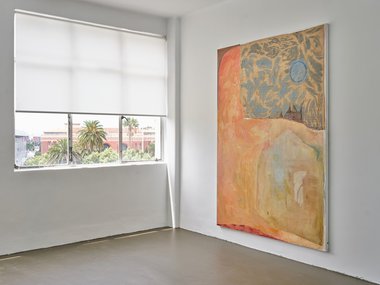


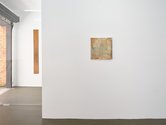
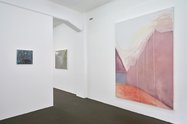

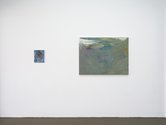


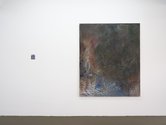



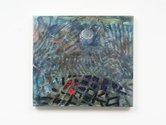
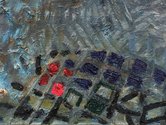
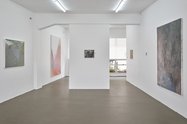
 Advertising in this column
Advertising in this column Two Rooms presents a program of residencies and projects
Two Rooms presents a program of residencies and projects



This Discussion has 0 comments.
Comment
Participate
Register to Participate.
Sign in
Sign in to an existing account.